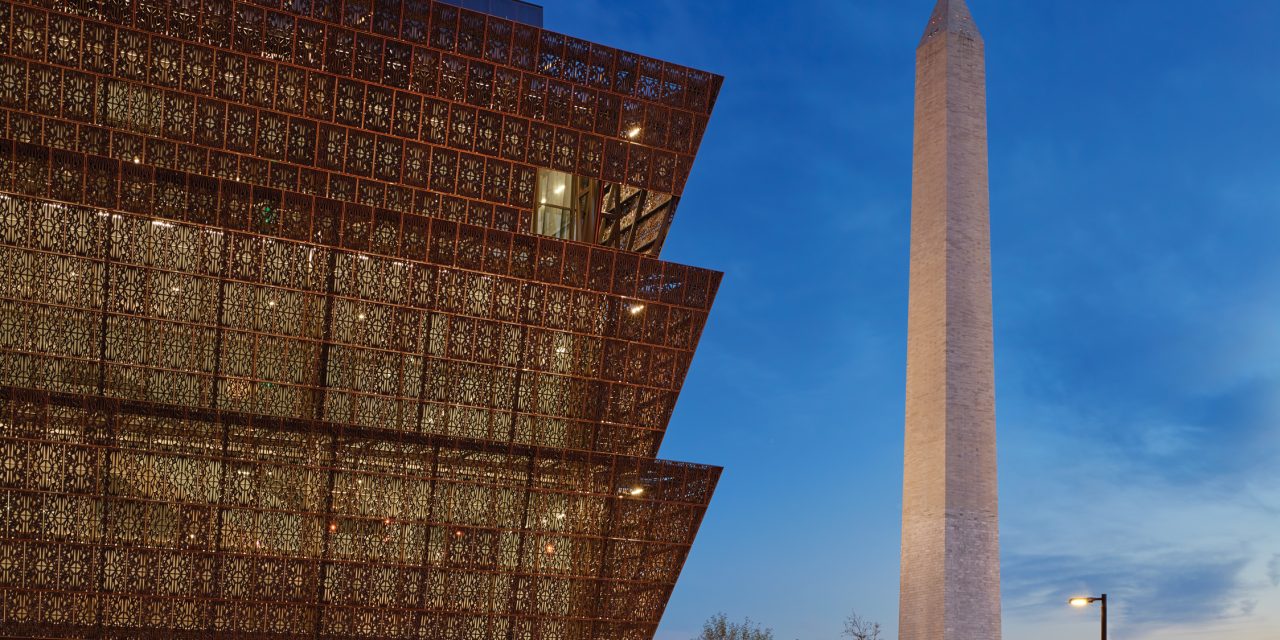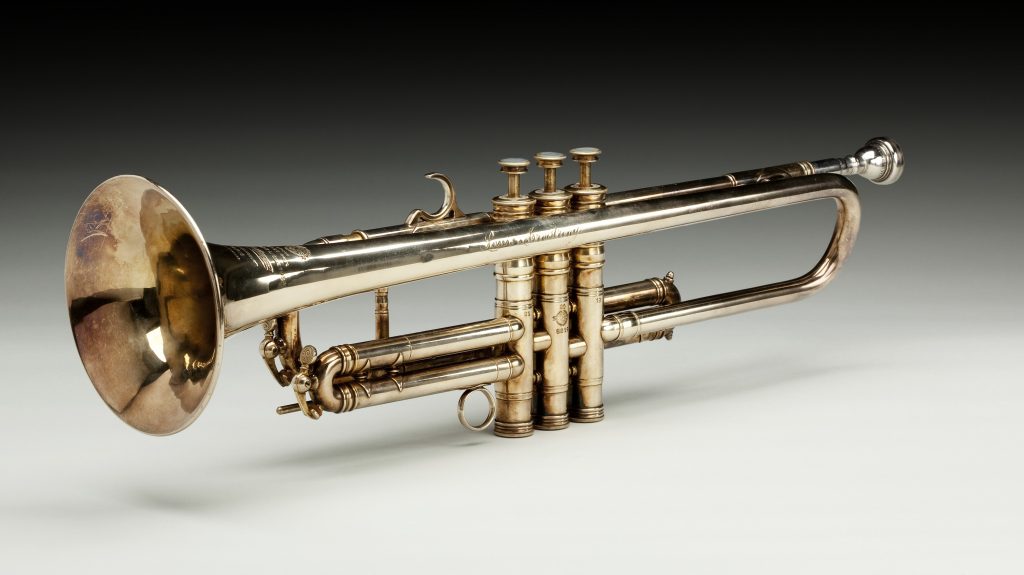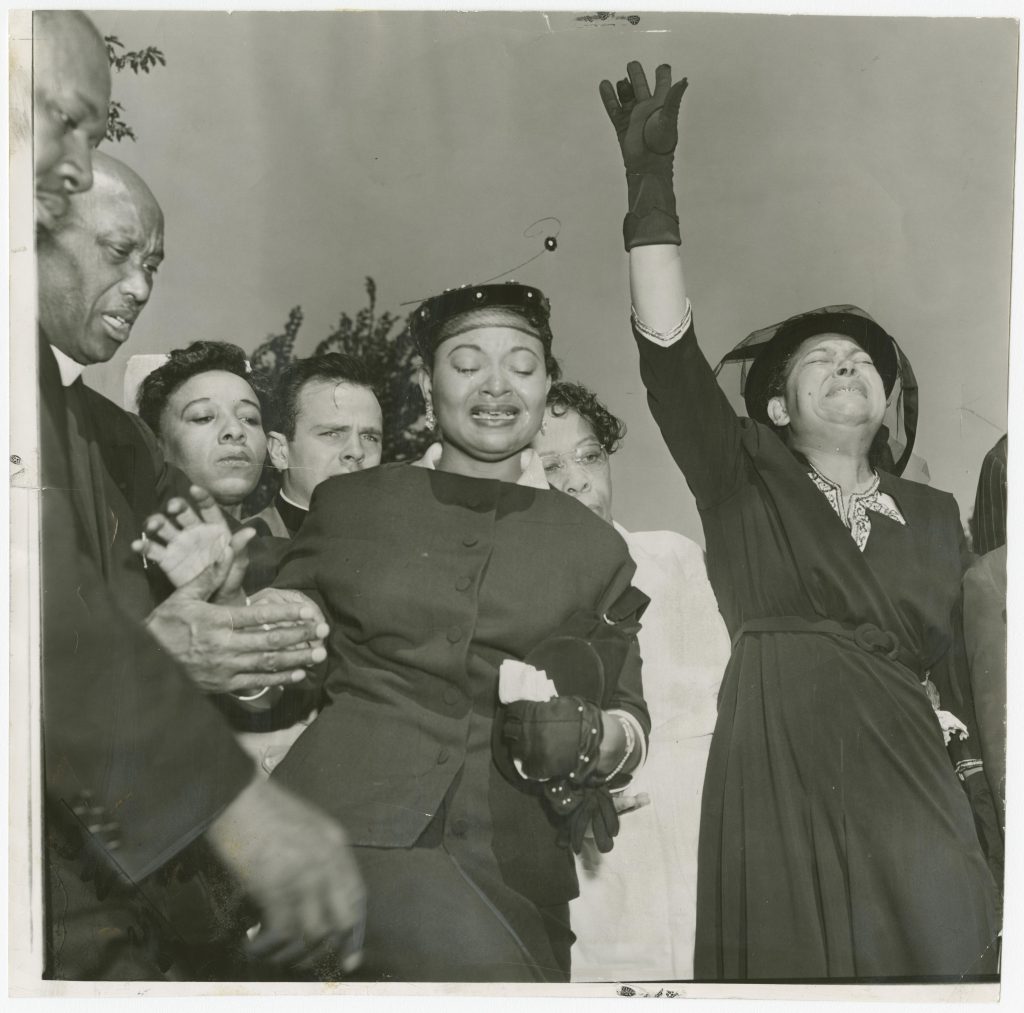USA
Washington, DC’s Newest Smithsonian Museum
by Jennifer Merrick
An Emotional Journey that Transcends History
You know you’re in a good museum when the invisible barrier that separates you from history vanishes, and you feel like you’re part of the stories behind the glass displays.
At the National Museum of African American History and Culture, Washington’s newest Smithsonian museum, history not only disappears, it reaches out and kicks you in the gut. Opened almost a year ago on September 24th, this 400,000 square-foot institution honors African American history with approximately 34,000 artifacts, including a slave cabin from Edisto Island, Harriet Tubman’s hymn book, Rosa Park’s dress, Chuck Berry’s Cadillac and Louis Armstrong’s trumpet.
Even the building itself makes a striking statement with its dark metal lattice design as does its location, next to the Washington Monument.
“It’s the last museum that will be built on the National Mall,” explains Elliott Ferguson, president and CEO of Destination DC.
The museum’s prominent position and strong presence represents an effort that began more than 100 years ago to erect the only national museum dedicated entirely to showcasing and documenting the African American story and its impact on history.
Its exhibitions are designed to be experienced from the bottom up. Below ground level are the history galleries, which chronicle slavery, the era of segregation and the civil rights movement. The above ground exhibitions explore themes of culture and community, music, cultural expressions and visual arts. However, its impressive artifacts, symbolic architecture and wide-spanning inaugural exhibitions are not what makes the National Museum of American History and Culture a great museum.
It’s the emotional journey for each guest that transcends history.
“It’s a painful to story to tell in any crowd,” says Ferguson, who spoke of the emotions that were felt when his diverse team toured the museum. “But it’s something the world needs to be exposed to.”
Personally, it is Emmett Till’s story that hits me the hardest. In this display is the article that appeared in the September 1955 issue of Jet Magazine, about a 14-year-boy who was brutally beaten and killed after whistling at a white woman. I choke back the tears as I read about a mother’s cry for the world to come and see what they did to her baby and the brutal photos that shook a nation, which is considered pivotal in igniting the civil rights movement.
Shaken already, I’m not prepared for what lays ahead. Turning the corner, I see Emmett Till’s casket. The tears now flow, and I turn around, wanting nothing more than to run out as fast I can.
“Be brave,” the security guard says in a deep, kind voice. So I walked closer to the casket with a glass-covered top, which Emmett Till’s mother wanted, so the world could see and know what had happened to her baby.
All the distance of history is gone in this moment.
If You Go:
Like all the other 19 Smithsonian museums in the capital area, admission is free; however timed passes are issued due to high demand. Advanced passes are released online monthly and go very quickly. On weekdays, a limited number of walk-up passes are available at 1PM. The museum asks that visitors be aware of counterfeit passes.
www.washington.org
https://nmaahc.si.edu/



















